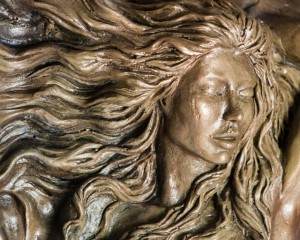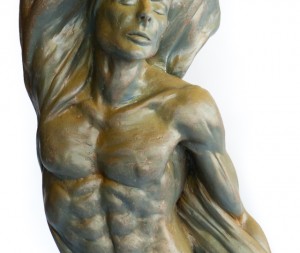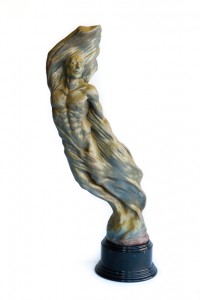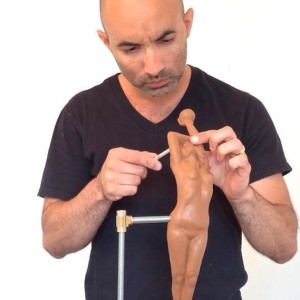Cognitive Psychology in Simple Terms
 What is Cognitive Psychology? Cognitive psychology in simple terms is the science that studies how the mind works. Pretty simple, right? For example, it tries to understand how we memorize things and how to remember. It also tries to understand how we perceive and make sense of information or environmental cues. It helps understand how we develop language skills, how conceptual thinking is developed, and how we make decisions. What we see, hear, touch, taste, feel, and imagine is information. In a sense, cognitive psychology deals with the ‘abstract’ functions of the brain and how it processes the information.
What is Cognitive Psychology? Cognitive psychology in simple terms is the science that studies how the mind works. Pretty simple, right? For example, it tries to understand how we memorize things and how to remember. It also tries to understand how we perceive and make sense of information or environmental cues. It helps understand how we develop language skills, how conceptual thinking is developed, and how we make decisions. What we see, hear, touch, taste, feel, and imagine is information. In a sense, cognitive psychology deals with the ‘abstract’ functions of the brain and how it processes the information.
How does cognitive psychology helps you? If you understand how you memorize things then you will do the things that make you memorize more effectively. In education we rely upon this science to develop learning strategies that can be used in practice. Here is where research has an important role. Through observation and other forms of data collection and analysis we get to understand phenomena that then allow us to design ways to help people learn more efficiently. This includes delivering the information in ways that can be processed through different channels or in different ways. People learn in many different ways and some have preferred ways of learning. They are more inclined to get information in a way that is easier for them to receive, process, and understand.
There are so many aspects of cognitive psychology for learning that can be discussed and each one will branch out to more and more intricacies of this fascinating computer we call brain. We can talk about memory, problem solving and critical thinking, language development, understanding math, and how the environment affects mental functions. We can talk about the emotional aspects of mental functions like motivation. We can also talk about the physical aspects that affect cognition. The list can go on forever. We are only exploring the surface. It is important to understand that cognitive psychology is still theoretical and the mysteries of the brain may never be completely revealed. That is indeed the beauty of all of it and what keeps us searching and researching.




The Journey of the Creative Mind
The Artist at Work
Art looks like a destination. Art looks like a journey. Art looks like both. There are many physical processes involved in the creation of art. The eyes, the hands, and body movements combine to develop what can be called ‘technique’. Technique is connected to the non-physical world of the mind. What are we thinking when we create? That is considering the premise that we need to be actively thinking in order to exist according to René Descartes’ “je pense, donc je suis” (I think, therefore I am). What are we feeling? Considering that we are also emotional beings and feelings are our connection to a physical world. What are the antecedents that provoke those things? That is accepting that we are influenced by something or someone triggering thoughts, feelings or ideas that are now materializing in our art. Are there ‘energies’ outside the physical brain motivating creativity? That is the concept of the ancient Greeks’ muses and the conception that inspiration comes from outside of us.
Humans are always trying to explain abstract ideas in a ‘concrete’ manner even though language itself is an abstraction. Moreover, I believe writing is not a way of making the idea concrete but a visual way to make it abstract. The idea becomes a sound and the sound received visual symbols we call ‘letters’ which consequently forms an alphabet. We form words with them providing a visualization of the idea. Cognitive psychology attempts to explain this phenomena. In instructional design we pay attention to learning concepts that help us design learning activities. Concepts as making sense, consciousness, perception, reflection, intention, action, and so on. Psychoanalysis, made famous by Sigmund Freud, explores what I am going to call ‘the dark side of the moon’. In psychoanalysis the focus is on what happens in a conscious state but in the unconscious mind. Concepts like subliminal messages, dreams, suppressed memories, instincts, and other factors that connects us to the conscious world with an unconscious root. Think of Salvador Dalí and surrealism.
We can try to explain or map the journey of the creative mind and we will always fall short of explaining its full ‘reality’. We can take a piece of art as a destination and trace back the steps to the beginning of time in an attempt to explain creativity by its result. I will argue that the artwork is not the result or the destination of the creative mind more mostly a souvenir from the trip like that card, t-shirt, or the famous coffee mug we get as a memory. Creativity is much more powerful than its result. There might be more happening in the subconscious mind than what is happening in the conscious mind when art is created. The journey of the creative mind is not to be fully explained or understood but to be enjoyed and experienced. It is what we talk about to entertain ourselves with the possibilities and not to prove a point. We just enjoy the trip, the memories, and the souvenirs.